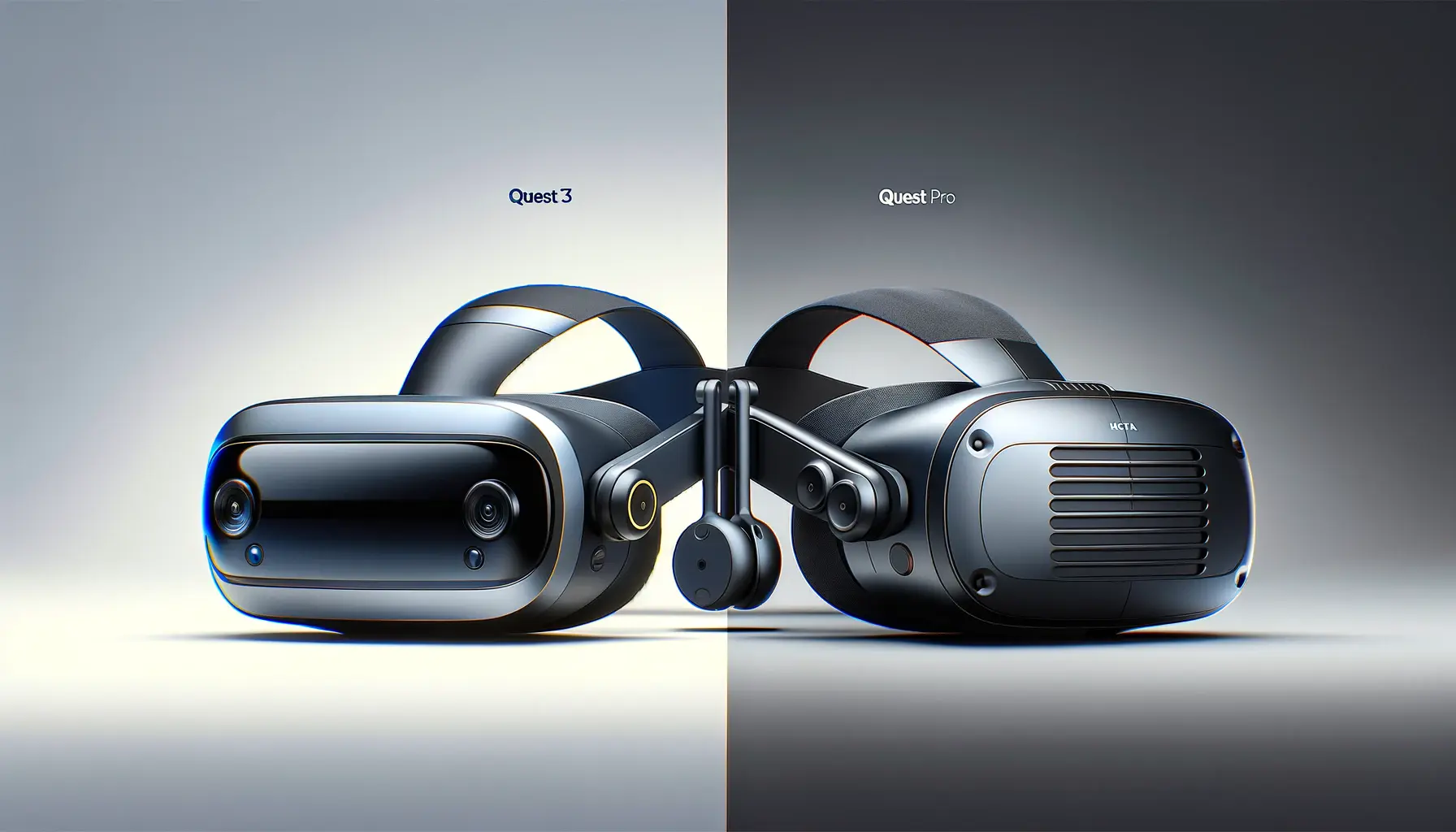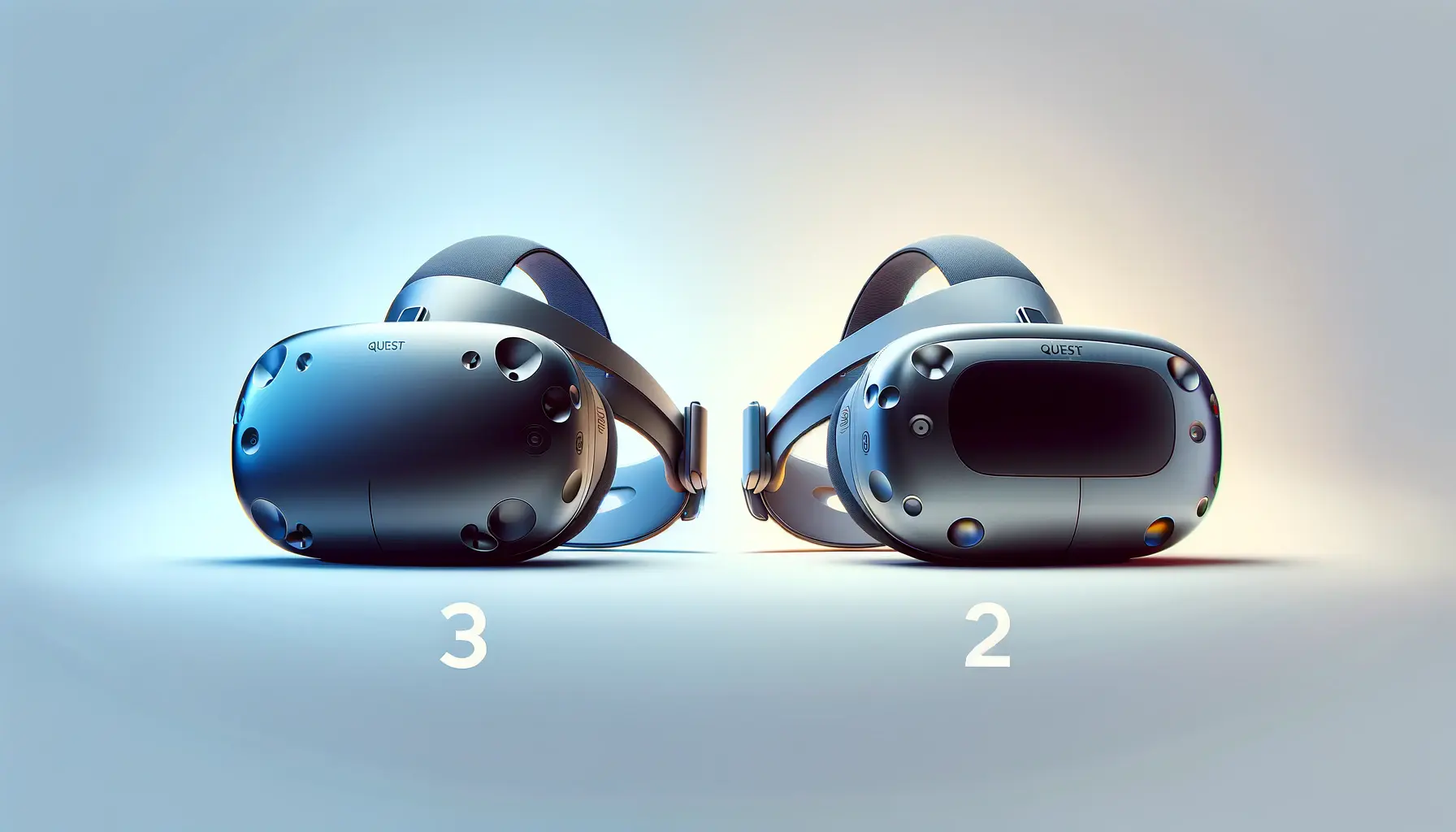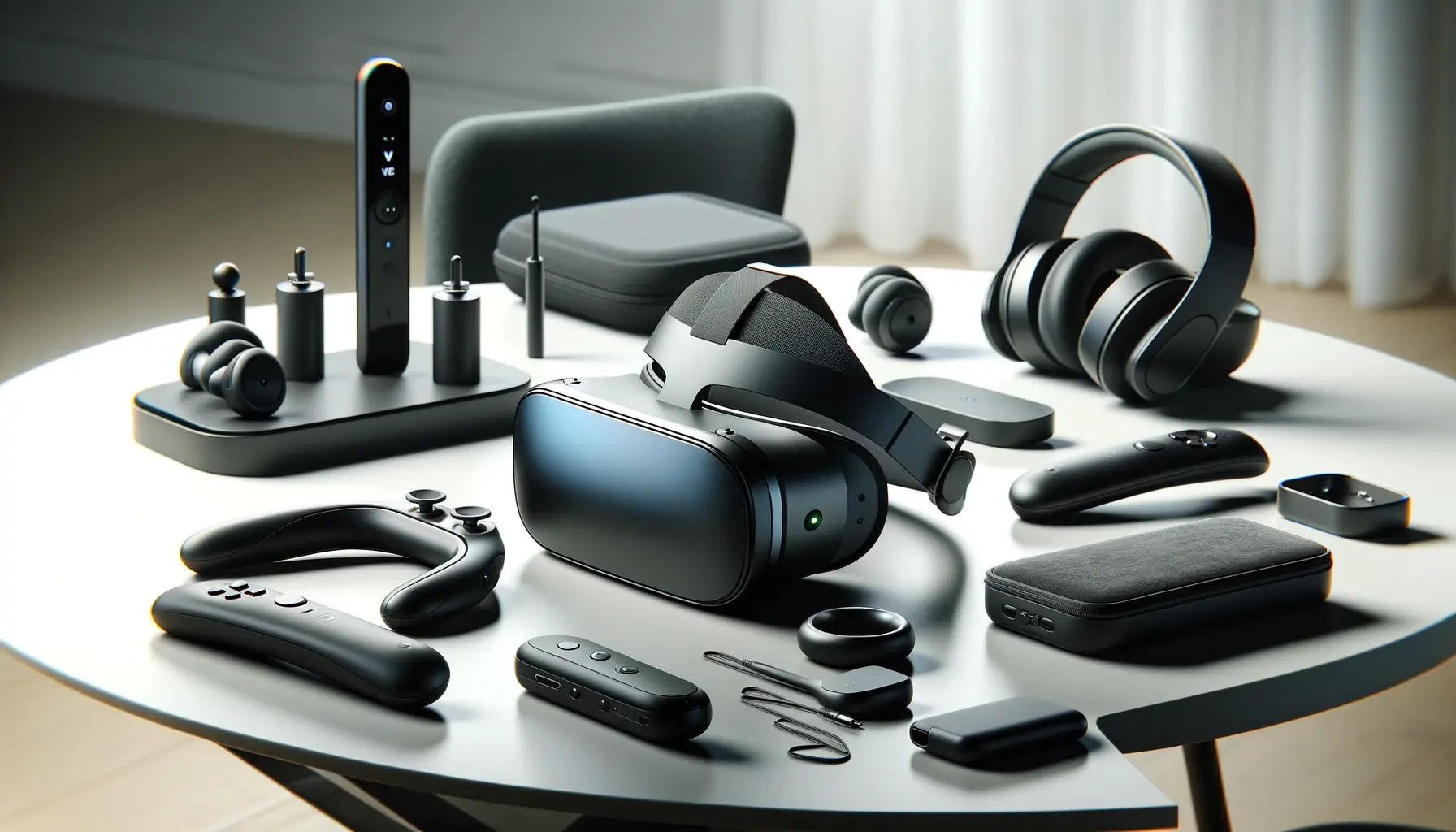Ensuring the longevity and optimal performance of your Meta Quest 3 VR headset hinges significantly on how well you care for its lenses.
These lenses are not just any ordinary components; they are the windows to immersive virtual realities, offering users a gateway to experiences that blur the lines between the digital and physical worlds.
Proper lens maintenance is crucial, not only to preserve the clarity and quality of the virtual experience but also to protect the investment made in this cutting-edge technology.
Understanding the importance of lens care in the Meta Quest 3 ecosystem requires a deep dive into the specifics of what makes these lenses unique and why they demand special attention.
Unlike traditional optical components, the lenses in VR headsets are subjected to a variety of environmental factors and usage patterns that can significantly impact their condition and functionality.
From accidental scratches to exposure to harmful elements, the risks are manifold.
This article aims to equip users with the knowledge and techniques necessary to navigate these challenges effectively, ensuring their VR journey remains uninterrupted and visually stunning.
- Understanding Lens Vulnerabilities
- Effective Cleaning Techniques
- Understanding Lens Materials and Coatings
- Navigating Common Lens Issues
- Advanced Lens Protection Strategies
- Customizing Your VR Experience
- Staying Updated with Lens Technology
- Conclusion: Ensuring the Longevity of Your Meta Quest 3 Lenses
- FAQs on Meta Quest 3 Lens Care
Understanding Lens Vulnerabilities
The Risk of Scratches
One of the most common threats to Quest 3 lenses is physical damage, such as scratches.
These can occur from seemingly innocuous actions, like cleaning the lenses with a rough cloth or accidentally dropping the headset.
Scratches not only degrade the visual quality of the VR experience but can also lead to permanent damage if not addressed properly.
It’s essential to understand the materials used in these lenses and the best practices for handling them to minimize the risk of scratching.
Using the correct cleaning tools and techniques plays a pivotal role in preventing scratches.
A microfiber cloth, designed specifically for cleaning optical surfaces, should be the tool of choice.
This cloth gently removes dust, fingerprints, and other contaminants without leaving behind any scratches.
The importance of using a clean, dry microfiber cloth cannot be overstated, as reusing a dirty cloth can inadvertently drag particles across the lens surface, causing scratches.
Exposure to Sunlight and Heat
Another critical vulnerability of Quest 3 lenses is their sensitivity to direct sunlight and extreme heat.
The lenses can act like magnifying glasses, focusing sunlight onto the display and causing irreversible damage.
This phenomenon can occur in a matter of seconds, highlighting the need for constant vigilance when using or storing the headset.
To safeguard against this, always store the Quest 3 in a shaded, cool place, away from potential exposure to direct sunlight.
Moreover, the accumulation of heat can also affect the lenses and the headset’s internal components.
High temperatures can warp the plastic around the lenses, leading to misalignment or even melting of parts.
Ensuring proper ventilation and avoiding prolonged exposure to high temperatures are crucial steps in maintaining the integrity of your Quest 3 headset.
Remember, the key to avoiding lens damage is not just in how you clean, but also in how you handle and store your Meta Quest 3 headset. Proper care extends beyond the lenses, encompassing all aspects of the device’s maintenance.
Effective Cleaning Techniques
Keeping the lenses of your Meta Quest 3 clean is paramount for an optimal VR experience.
Dust, fingerprints, and smudges can significantly impair vision, detracting from the immersive experience.
However, cleaning these delicate components requires more than just a quick wipe; it necessitates a careful, methodical approach to avoid damage.
Here are the steps and considerations for effectively cleaning your Quest 3 lenses:
- Use the Right Materials: Always opt for a microfiber cleaning cloth and, if necessary, a lens-specific cleaning solution. Avoid using paper towels, rough fabrics, or household cleaners, as these can scratch the lenses or degrade the coating.
- Dry Cleaning Method: Begin with a dry microfiber cloth to gently wipe away any dust or debris. Use circular motions starting from the center of the lens outward. This method often suffices for routine maintenance.
- Moist Cleaning Method: For more stubborn smudges, lightly dampen a corner of the microfiber cloth with a small amount of lens cleaning solution or distilled water. Carefully wipe the lens, then immediately follow with a dry part of the cloth to remove any moisture.
- Avoid Direct Liquid Application: Never spray cleaning solutions directly onto the lenses. Excess liquid can seep into the edges of the lenses or the headset, potentially damaging the electronic components.
Preventive Measures for Lens Care
In addition to regular cleaning, taking preventive measures can significantly reduce the frequency and extent of lens cleaning required.
Here are some tips:
- Use Lens Covers: When not in use, covering the lenses can protect them from dust and accidental scratches. Lens covers or a microfiber pouch offer an easy and effective solution.
- Handle with Care: Always grasp the headset by the straps or the outer frame, avoiding direct contact with the lenses. This minimizes the risk of fingerprints or accidental damage.
- Proper Storage: Store your Quest 3 in a case or in a designated safe space where it’s shielded from sunlight and not at risk of being knocked over or sat upon.
By incorporating these cleaning and preventive practices into your routine, you can ensure that your Meta Quest 3 lenses remain in pristine condition, providing a clear window into the world of virtual reality.
Consistent lens care is not just about maintaining visual clarity; it’s about preserving the immersive VR experience that the Meta Quest 3 promises.
Understanding Lens Materials and Coatings
The lenses in the Meta Quest 3 are not just simple pieces of glass or plastic; they are sophisticated optical components designed to enhance the virtual reality experience.
Understanding the materials and coatings used in these lenses is crucial for proper care and maintenance.
This knowledge not only helps in applying the correct cleaning methods but also in appreciating the technology that goes into creating these immersive visual portals.
Lenses in VR headsets like the Quest 3 are typically made from high-quality optical-grade polycarbonate.
This material is chosen for its durability, clarity, and lightweight properties, making it ideal for extended VR sessions.
However, despite its resilience, polycarbonate is susceptible to scratches if not handled with care.
Additionally, the lenses are treated with anti-reflective coatings to reduce glare and enhance the user’s visual experience.
These coatings are delicate and can be damaged by improper cleaning agents or techniques.
Importance of Anti-Reflective Coatings
The anti-reflective (AR) coatings on Quest 3 lenses play a vital role in the overall VR experience.
By minimizing reflections, these coatings help to increase the contrast and sharpness of the virtual environment, allowing for a more immersive and realistic experience.
However, AR coatings are sensitive to chemicals and rough handling.
Using harsh cleaning solutions or wiping the lenses with abrasive materials can strip away these coatings, leading to increased glare and a diminished VR experience.
- Chemical Sensitivity: Always choose cleaning solutions that are specifically designed for optical lenses with AR coatings. Avoid alcohol-based or ammonia-based cleaners, as these can degrade the coatings over time.
- Gentle Handling: The application of excessive force while cleaning can also damage the AR coatings. Gentle, circular motions with a microfiber cloth are recommended to avoid any undue pressure on the lenses.
Choosing the Right Cleaning Solutions
When a dry microfiber cloth is not enough to clean the lenses, selecting an appropriate cleaning solution is crucial.
Opt for solutions that are labeled as safe for use on optical lenses with anti-reflective coatings.
These solutions are formulated to be gentle on the lenses and coatings, ensuring that your cleaning routine does not compromise the integrity of your Quest 3 headset.
- Distilled Water: For most cleaning needs, distilled water is a safe and effective option. It lacks the minerals found in tap water that can leave residue on the lenses.
- Specialized Lens Cleaners: For tougher smudges, a lens cleaner designed for AR-coated lenses can be used sparingly. Ensure that the cleaner is free from harmful chemicals and is specifically recommended for use with VR headsets.
By understanding the materials and coatings of your Quest 3 lenses, you can take the necessary steps to ensure they remain clear and functional, providing you with the best possible VR experience.
Proper care and maintenance of your Quest 3 lenses are essential for preserving the high-quality VR experience that Meta strives to provide.
Navigating Common Lens Issues
Even with meticulous care, users of the Meta Quest 3 may encounter common lens issues that can affect their VR experience.
Recognizing and knowing how to address these problems promptly can prevent permanent damage and ensure the headset continues to provide an immersive experience.
This section delves into some of the frequent challenges and their solutions.
Understanding the root causes of these issues is the first step in prevention and repair.
From fogging to accidental scratches, each problem has its unique set of solutions.
By staying informed, users can enjoy a seamless VR journey without the interruption of lens-related setbacks.
Fogging Lenses
Fogging is a common issue where condensation forms on the lenses, usually due to temperature differences between the user’s face and the headset.
This can significantly impair visibility and detract from the VR experience.
To combat lens fogging:
- Pre-Warm the Headset: Allowing the headset to adjust to room temperature before use can reduce the temperature gradient that causes fogging.
- Anti-Fog Wipes or Sprays: Products designed to prevent fogging on optical lenses can be applied to the Quest 3 lenses, offering a temporary solution to this issue.
- Adjust the Fit: Sometimes, simply adjusting the fit of the headset to allow for better air circulation can help reduce fogging.
Scratched Lenses
Scratches are a more serious concern, as they can permanently affect the clarity of the VR experience.
If scratches occur, the options are somewhat limited:
- Professional Repair: For deep scratches, consulting with a professional repair service that specializes in VR headsets may be necessary. They can assess if the lenses can be polished or need replacing.
- DIY Solutions: Minor scratches can sometimes be minimized with DIY solutions, such as applying a small amount of lens-safe polish. However, these methods should be approached with caution, as they can potentially cause further damage.
Dealing with Dust and Debris
Dust and debris can accumulate on the lenses and inside the headset, affecting visual quality.
Regular cleaning with a microfiber cloth can prevent buildup.
For more stubborn debris:
- Compressed Air: A can of compressed air can gently remove dust from hard-to-reach areas without touching the lenses. Be cautious to use short bursts to avoid damaging sensitive components.
- Soft Brush: A soft, fine-bristled brush can also be effective in dislodging dust particles from the lens surface and the headset’s crevices.
By addressing these common lens issues proactively, users can maintain the performance and longevity of their Meta Quest 3 headsets.
Each challenge has its solution, ensuring that the virtual reality experience remains as immersive and clear as intended.
Regular maintenance and prompt attention to lens issues are key to enjoying a seamless and immersive VR experience with the Meta Quest 3.
Advanced Lens Protection Strategies
Protecting the lenses of your Meta Quest 3 goes beyond regular cleaning and careful handling.
Advanced protection strategies can play a crucial role in extending the life of your VR headset and ensuring that the visual quality remains uncompromised.
This part of the article explores additional measures that can be taken to safeguard the lenses against potential damage.
Implementing these strategies not only helps in maintaining the headset’s condition but also enhances the overall VR experience by keeping the lenses clear and free from obstructions.
From protective accessories to environmental considerations, let’s delve into how you can further shield your Quest 3 lenses.
Protective Accessories
One of the most effective ways to protect your Quest 3 lenses is through the use of protective accessories designed specifically for VR headsets.
These include:
- Lens Protectors: Clear, adhesive films or covers that can be applied directly to the lenses to guard against scratches and dust. These protectors are usually made from materials that do not interfere with the headset’s optical performance.
- Prescription Lens Adapters: For users who wear glasses, prescription lens adapters offer a dual benefit. They provide clear vision without the need for glasses, which can scratch the headset’s lenses, and act as an additional protective layer.
- Carrying Cases: A sturdy carrying case is essential for storing and transporting your Quest 3. It protects the headset from physical damage and keeps the lenses safe from dust and direct sunlight when not in use.
Environmental Considerations
Beyond physical accessories, considering the environment in which you use and store your Quest 3 can also significantly impact lens protection.
Key environmental factors to consider include:
- Avoiding Direct Sunlight: As previously mentioned, direct sunlight can cause irreversible damage to the lenses. Always store the headset in a place where sunlight cannot directly reach it.
- Maintaining Optimal Humidity: High humidity levels can lead to lens fogging and potentially damage the headset’s electronic components. Using a dehumidifier in the storage area can help mitigate these risks.
- Temperature Control: Extreme temperatures, both hot and cold, can affect the headset’s materials and electronics. Storing your Quest 3 in a temperature-controlled environment ensures its longevity.
By combining these advanced lens protection strategies with regular maintenance, you can significantly enhance the durability and performance of your Meta Quest 3.
Protecting the lenses from potential hazards not only preserves the quality of your VR experience but also safeguards your investment in this cutting-edge technology.
Investing in advanced lens protection strategies is crucial for maintaining the pristine condition and optimal performance of your Meta Quest 3 lenses.
Customizing Your VR Experience
Customizing the virtual reality experience to suit individual preferences and needs is a crucial aspect of owning a Meta Quest 3.
Beyond the basic setup, there are several ways to enhance your VR sessions, from adjusting settings for comfort and clarity to incorporating accessories that elevate the overall experience.
This customization not only maximizes enjoyment but also contributes to the longevity of the device, including the care of its lenses.
Let’s explore how personalization and the right adjustments can lead to a more immersive and comfortable VR journey, ensuring that every session is as engaging and clear as possible.
Adjusting Visual Settings
One of the first steps in customizing your VR experience is to adjust the visual settings to your liking.
The Meta Quest 3 offers various options to tweak the display and performance settings, ensuring optimal clarity and comfort.
These adjustments can help reduce eye strain and prevent the lenses from fogging up, contributing to a better and longer-lasting VR experience.
- IPD Adjustment: The Interpupillary Distance (IPD) setting allows you to align the lenses with your eyes correctly, enhancing visual clarity and reducing the risk of eye strain.
- Brightness and Contrast: Adjusting the brightness and contrast levels can help tailor the visual experience to your environment, making it easier on the eyes and improving the immersion.
Incorporating Comfort Accessories
Comfort is key to enjoying extended VR sessions without discomfort or damage to the headset.
Several accessories are designed to enhance the fit and feel of your Meta Quest 3, from upgraded straps to face pads, ensuring the headset remains securely and comfortably in place while minimizing pressure on the face and eyes.
- Enhanced Head Straps: Upgrading to a more comfortable or adjustable head strap can significantly improve the fit of the headset, reducing the likelihood of it shifting and causing wear or damage to the lenses.
- Face Pads: Replacing the standard face pad with a softer, more breathable option can prevent sweat buildup and lens fogging, keeping the lenses clear during intense sessions.
Optimizing the Play Area
Finally, optimizing your play area can protect your headset and lenses from accidental damage.
Ensuring you have enough space free of obstacles reduces the risk of bumps and falls that could scratch or damage the lenses.
Using boundary markers and playing in a well-lit, but not overly bright, environment can also help maintain the integrity of your VR setup.
Customizing your Meta Quest 3 experience is not just about personal preference; it’s about enhancing the longevity and performance of your device.
By taking the time to adjust settings, incorporate comfort accessories, and optimize your play area, you can enjoy a tailored VR experience that keeps your headset in top condition.
Neglecting customization and comfort adjustments can lead to a less immersive VR experience and potentially increase the risk of damage to your Meta Quest 3 lenses.
Staying Updated with Lens Technology
In the rapidly evolving world of virtual reality, staying informed about the latest advancements in lens technology and care practices is essential for Meta Quest 3 users.
Innovations in optical design, materials, and coatings continually enhance the VR experience, offering clearer visuals, reduced glare, and increased comfort.
By keeping abreast of these developments, users can not only improve their VR sessions but also extend the lifespan of their headsets through better maintenance and care.
This final section highlights the importance of staying updated with the VR industry’s lens technology advancements and how they can impact your Quest 3 experience.
Emerging Lens Technologies
New materials and manufacturing techniques are at the forefront of enhancing VR lens quality.
Innovations such as scratch-resistant coatings, anti-fog technologies, and improved anti-reflective coatings are being developed to address common issues faced by VR users.
These advancements not only improve the durability of the lenses but also the clarity and immersion of the VR experience.
- Scratch-Resistant Coatings: Future lens technologies may include more advanced scratch-resistant coatings, making them more resilient to everyday wear and tear.
- Anti-Fog Technologies: Innovations in anti-fog treatments can help prevent lens fogging during extended use, a common issue for many VR enthusiasts.
- Enhanced Anti-Reflective Coatings: Improved AR coatings can further reduce glare and reflections, providing a clearer and more immersive visual experience.
Adapting to New Care Practices
As lens technologies evolve, so too do the recommended care practices.
Staying informed about the latest recommendations for cleaning and maintaining your Quest 3 lenses is crucial.
Manufacturers and VR communities often share insights and tips on how to best care for new lens types, ensuring users can adopt the most effective and safe cleaning methods.
- Follow Manufacturer Updates: Meta regularly provides updates and guidelines on how to care for your Quest 3, including any changes in maintenance practices due to new lens technologies.
- Engage with the VR Community: The VR community is a valuable resource for sharing experiences and tips on lens care. Participating in forums and social media groups can offer practical advice and solutions to common problems.
Embracing the latest advancements in lens technology and care practices can significantly enhance your Meta Quest 3 experience.
By staying informed and proactive, you can enjoy the benefits of improved visual quality, comfort, and headset longevity.
The future of VR is bright, and with the right care and attention, your Quest 3 can continue to provide an unparalleled entry into virtual worlds.
The ongoing evolution of lens technology in VR is a testament to the industry’s commitment to enhancing user experience. By staying informed and adaptable, Quest 3 users can ensure their headset remains at the forefront of this exciting technological journey.
Conclusion: Ensuring the Longevity of Your Meta Quest 3 Lenses
The journey through the realms of virtual reality with the Meta Quest 3 is an adventure that hinges on the clarity, condition, and care of its lenses.
As the gatekeepers to immersive worlds, these lenses demand attention and respect to maintain their ability to transport users to other realities.
This article has traversed the landscape of lens care, from understanding vulnerabilities to adopting advanced protection strategies, all aimed at preserving the integrity and performance of your VR headset.
Key Takeaways for Optimal Lens Care
Reflecting on the insights shared, several key takeaways emerge that are essential for every Meta Quest 3 user:
- Maintaining the lenses requires a combination of regular cleaning, using the right materials, and employing effective techniques to avoid scratches and damage.
- Protective accessories and environmental considerations play a significant role in extending the lifespan of the lenses and, by extension, the VR headset itself.
- Customization and adjustments to the VR experience not only enhance personal comfort and immersion but also contribute to the overall well-being of the device.
- Staying informed about advancements in lens technology and care practices ensures that users can adapt to and benefit from the latest innovations in the VR industry.
In conclusion, the care and maintenance of Meta Quest 3 lenses are pivotal to the longevity and enjoyment of the VR experience.
By embracing the guidelines and strategies outlined in this article, users can ensure that their journey through virtual worlds remains as vivid and immersive as intended.
The Meta Quest 3, with its cutting-edge technology and potential for endless exploration, represents a significant investment in digital entertainment.
Protecting this investment starts with the lenses, making their care a top priority for every user.
As we look forward to the future of virtual reality, let us do so with clear vision and a commitment to maintaining the windows through which we view these new dimensions.
FAQs on Meta Quest 3 Lens Care
Explore common questions and expert answers to maintain the clarity and longevity of your Meta Quest 3 lenses.
Use a dry microfiber cloth for daily cleaning. For smudges, lightly dampen the cloth with distilled water, avoiding direct liquid application on the lenses.
No, avoid using alcohol or abrasive cleaning solutions as they can damage the lens coatings and the headset’s materials.
Pre-warm the headset to room temperature and consider using anti-fog wipes or sprays designed for optical lenses to reduce fogging.
Always handle the headset by the straps or frame, use lens covers when not in use, and clean with a soft microfiber cloth.
Yes, but only use solutions specifically designed for optical lenses, and apply it to the cloth, not directly on the lenses.
Yes, glasses can scratch the lenses. Use prescription lens adapters or ensure there’s enough space between glasses and lenses.
Clean your lenses regularly, depending on usage. Daily users should wipe the lenses with a microfiber cloth at least once a day.
Minor scratches can be minimized with lens-safe polish. For deep scratches, consult a professional repair service.












